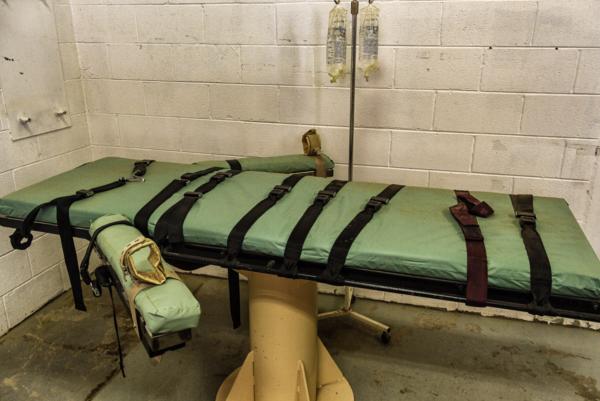Whatever your feelings are about the death penalty, it's a pretty safe bet that you don't want to be reading this:
[Convicted murderer Clayton] Lockett, however, was not unconscious. He writhed, groaned and convulsed on the table in agony, acid and fire pumping though his body. An excruciating 43 minutes passed, Lockett would scream and twitch, fighting against the restraints as the poison slowly took hold. Death would finally arrive via heart attack, possibly resulting from the overwhelming pain rather than the chemical cocktail itself.
Richard Avis, "Top 10 Horrifically Botched Lethal Injections."
Avis' Listverse article ranks Oklahoma's botched execution of Lockett as the worst of the worst. Others have gone awry due to the inability of prison officials to find a suitable vein, a common problem with long-term users of injectable drugs. Additional problems involved a violent allergic reaction, and technical issues, such as needles coming free or the unintentional use of the wrong execution drug. As bad as these were, the Lockett execution stands out for two reasons. It took so long for him to die (1), and the torture that Oklahoma inflicted upon him was due to pharmacological ignorance. Instead of using sodium thiopental, a general anesthetic, the state chose midazolam (Versed), which is not. Versed, a member of the benzodiazepine class of drugs (which includes Valium) is a sleep-inducing sedative, but would never be used on its own for surgery. The patient would awaken from the pain, just like Lockett did.
Oklahoma chose a drug that was guaranteed to fail because sodium thiopental, the correct drug, could no longer be purchased by prisons.) Sodium thiopental is made in Europe, which does not condone capital punishment. (See: "Drugs For Life And Death We Can't Get Either."). In 2011, European drug companies simply stopped selling any that could be used for executions drugs to prisons. And in 2016, Pfizer became the last company to stop selling a number of drugs, all of which also have legitimate medical uses (2), to prisons.
In the past, lethal injections involved the sequential use of three intravenous drugs. First, sodium thiopental, a member of the barbiturate class that induces unconsciousness, was administered. Once the prisoner was unconscious, a second drug, pancuronium bromide, caused muscle paralysis, which stopped breathing. Finally, potassium chloride was used to ensure death by stopping the heart.
A little complicated, but when used properly it usually got the job done. But now, in the absence of sodium thiopental, prisons have tried to substitute other drugs and are essentially conducting human experiments on death row prisoners. And screwing it up royally. Had they consulted a medicinal chemist or pharmacologist, at least they would have gotten it "right." (3)
The lethal injection was intended to be used as a more humane method of execution. But the mixture of politics, missing drugs, and utter incompetence ensure that it was anything but. No matter how you feel about capital punishment, chemical torture of any person, no matter how vile their crime, has no place in modern society. Disgraceful.
Notes:
(1) Forty-three minutes is the longest recorded execution in US history.
(2) The list of Pfizer drugs included pancuronium bromide, rocuronium bromide and vecuronium bromide (paralyzing agents) potassium chloride, propofol, Versed, and Dilaudid (hydromorphone).
(3) There are at least three obvious methods that can be used to ensure a painless death, but I will not mention them because these methods can be used for suicide, including physician-assisted suicide. Let's leave that one alone for now.




